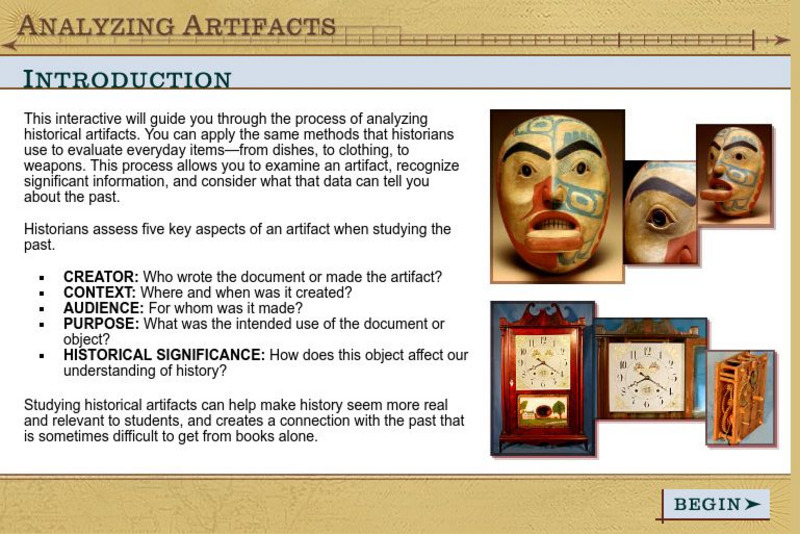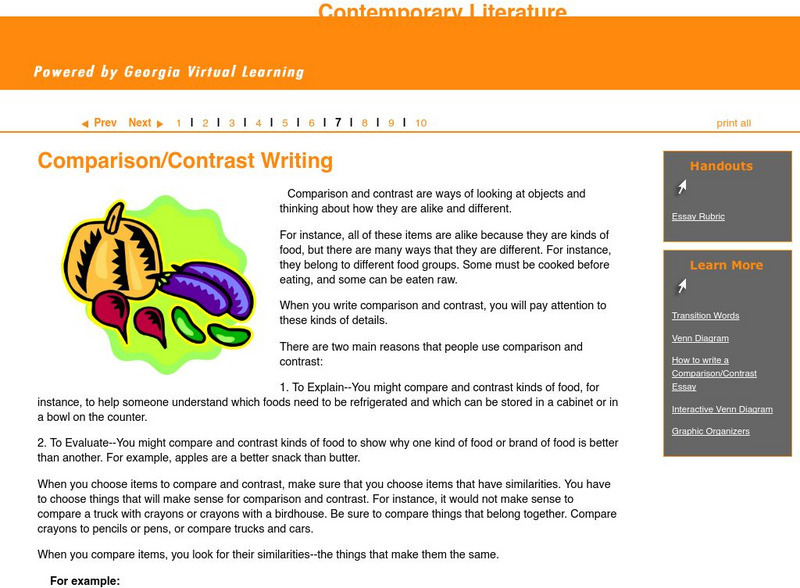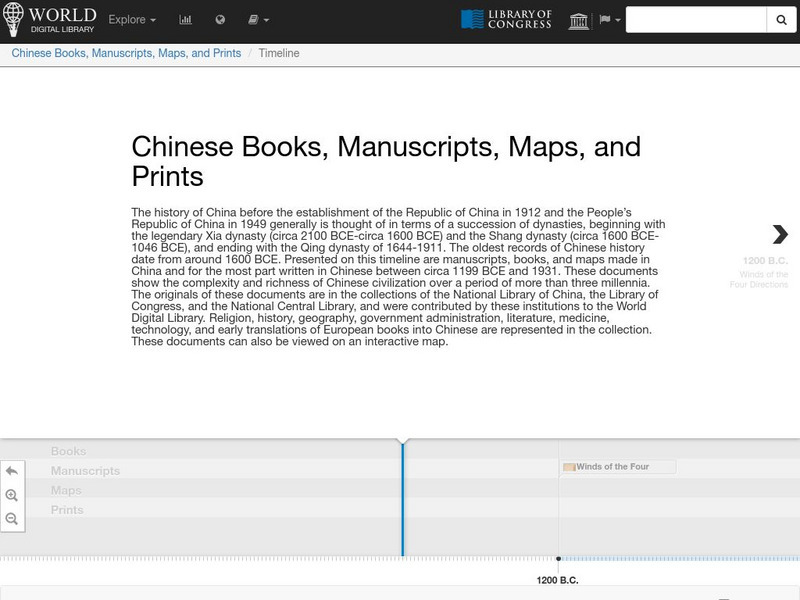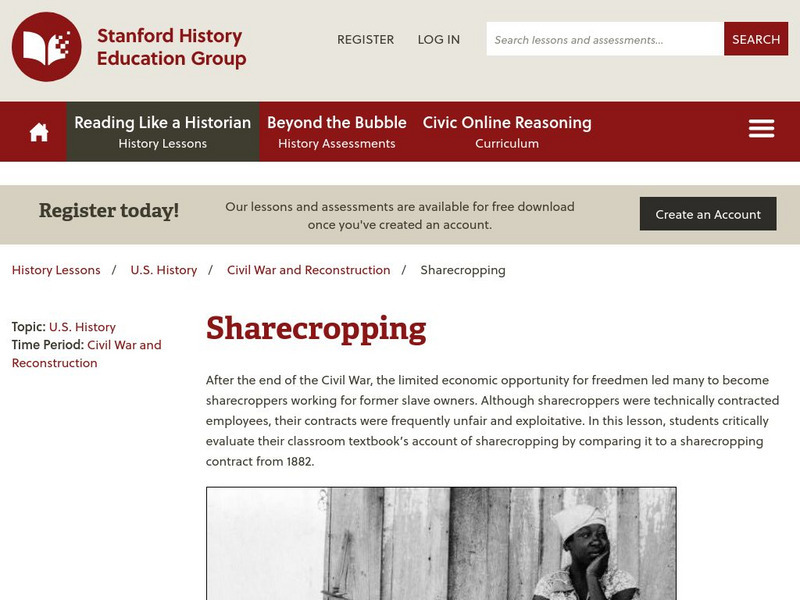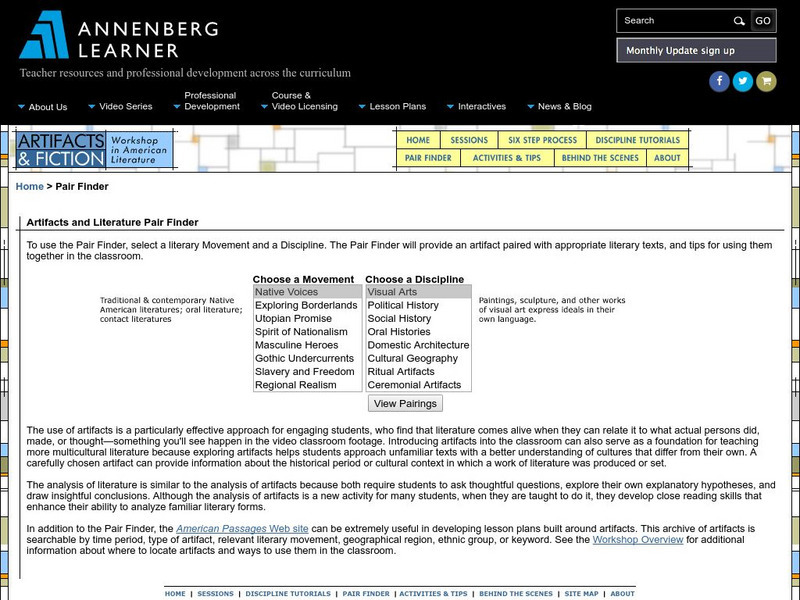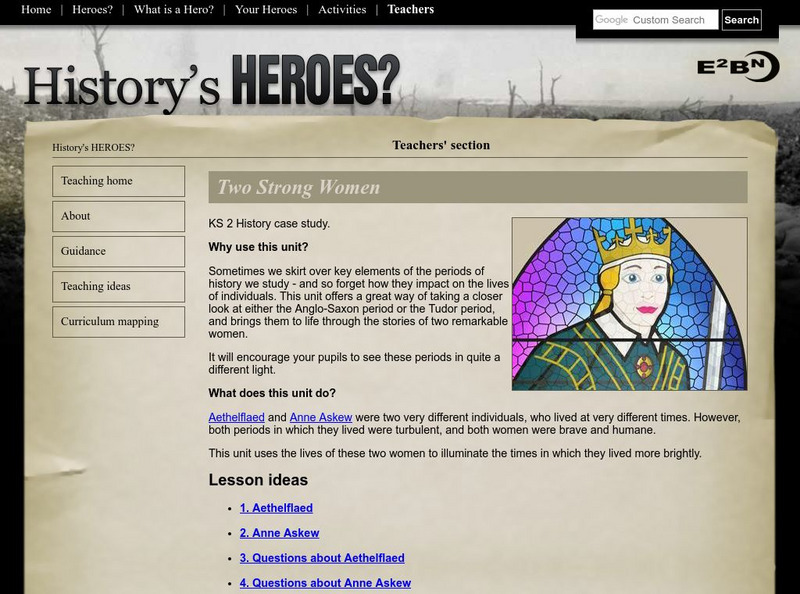Annenberg Foundation
Annenberg Learner: Analyzing Artifacts
Learn the steps in the 5-step process that historians use when they analyze an artifact as you investigate what you can learn from Native American and other items.
Other
Literature of India: Indian Writing in English
This site looks at Indian literature in English. Tracing the beginning of Indian literature from the 18th century this site analyses key literary figures up to present day.
Georgia Department of Education
Ga Virtual Learning: Ninth Lit and Comp: Poetry: Comparison/contrast Writing
This lesson focuses on writing an effective comparison and contrast essay. It explains and provides examples of the two methods of comparisons: point-by-point and item-by-item. It provides links to a comparison/contrast tutorial,...
Georgia Department of Education
Ga Virtual Learning: Contemporary Nonfiction: Comparison/contrast Writing
This lesson focuses on how to write a nonfiction comparison/contrast paper including the reasons for writing them and the three organizational strategies. It features links to transition words, graphic organizers, Venn diagrams,...
Library of Congress
World Digital Library: Chinese Books, Manuscripts, Maps, and Prints: Timeline
A collection of primary source materials presented on a timeline that explore the history of China from 1200 B.C. to 1931. Click on an image to go to a page with descriptive information about each item. Each description has an audio...
Google
Google for Education: Finding Patterns in Spelling Errors and History
In this activity, students analyze spelling errors and large sets of data to find patterns, develop abstractions, and discover how large amounts of data can tell us much about our society.
Stanford University
Beyond the Bubble: Civil Rights Movement in Context
[Free Registration/Login Required] The two letters presented here are from the archives of the National Association for the Advancement of Colored People (NAACP) and were written over twenty years apart. Students must read the letters...
Other
Bowdoin: Reading, Writing, Researching for History: A Guide for College Students
Reference guide material discusses how to research, write and read for history.
Stanford University
Sheg: Document Based History: Reading Like a Historian: Historical Thinking
[Free Registration/Login Required] This chart elaborates on the historical reading skills of sourcing, corroboration, contextualization, and close reading. In addition to questions that relate to each skill, the chart includes...
Stanford University
Sheg: Reading Like a Historian: Intro to Historical Thinking: Lunchroom Fight
[Free Registration/Login Required] A fight breaks out in the lunchroom and the principal needs to figure out who started it. But when she asks witnesses what they saw, she hears conflicting accounts. Why might these accounts differ? As...
Stanford University
Sheg: Document Based History: Reading Like a Historian: Sharecropping
[Free Registration/Login Required] Students solve a problem surrounding a historical question by reading primary source documents. This historical inquiry lesson allows students to critically evaluate their classroom textbook's account...
Stanford University
Sheg: Document Based History: Reading Like a Historian: Snapshot Autobiography
[Free Registration/Login Required] What is history? And why do historical accounts differ? In this lesson, students create brief autobiographies and then reflect on the process to better understand how history is written. Exploring these...
Annenberg Foundation
Annenberg Learner: Bridging World History: History and Memory
Are history and memory different? Peruse the various resources this unit provides for the way we view, know, and relate history to our family, our friends, and the world.
Sophia Learning
Sophia: Descriptive Papers: Organization
This slideshow lesson discusses the organization of descriptive papers. It reviews descriptive papers, lists the three most common organizational patterns: least to greatest, greatest to least, and chronological. Determining which order...
Annenberg Foundation
Annenberg Learner: Arbiter
Determine your standards (logic, creativity, structure, etc.) when assessing student writing. Evaluate three essays using an analytic or holistic rubric and see how your standards compare with your peers.
Annenberg Foundation
Annenberg Learner: Artifacts & Fiction Pair Finder
Pair artifacts with appropriate literary texts, and find tips for using them together in the classroom by selecting a literary movement and a discipline with this handy tool.
Annenberg Foundation
Annenberg Learner: Interactive Forum
Read two poems and follow the prompts to interpret them using four approaches: reader response, inquiry, cultural studies, and critical pedagogy. Use the prompts to guide personal reflection, launch a lesson with students, or join an...
Annenberg Foundation
Annenberg Learner: Invitation to World Literature
Multimedia course focuses on thirteen literary classics from many different times and many different cultures. Each lesson centers on a half-hour video offering multiple perspectives on a particular work. Read excerpts from each work and...
University of North Carolina
Unc: Writing Center: Comparing and Contrasting
This handout will help to determine whether a particular assignment is asking for comparison/contrast and then to generate a list of similarities and differences, decide which similarities and differences to focus on, and organize your...
Virginia Tech
Digital History Reader: Introduction
An online learning module for the U.S. and European history. Presents central questions of key events in history. Students explore data, evaluate conflicting accounts or interpretations, and develop conclusions based on primary evidence....
Colorado State University
Colorado State University: The Wac Clearinghouse
Although this site is primarily designed for instructors at the post-secondary level, the information and suggestions given can also be used, with only minor changes, at the high school or middle school levels as well. Learn ways for...
East of England Broadband Network
E2 Bn: History's Heroes: Two Strong Women
This unit features Aethelflaed and Anne Askew, two women from two different periods of England's history, who demonstrated great strength and fortitude in their respective eras. Identify similarities and differences of the women and...
Huntington Library
Huntington Library: The Reformation
In this lesson, young scholars examine primary source materials to investigate how ideas change and evolve over time and what impact past ideas have on people's perceptions of the present, or how the present may be perceived at some...
Texas Education Agency
Texas Gateway: Analyze Point of View in Literary Texts/fiction
[Accessible by TX Educators. Free Registration/Login Required] In this lesson, students will learn to identify the primary points of view used in fiction and weigh the advantages and disadvantages of each.CCSS.ELA-Literacy.CCRA.R.6
